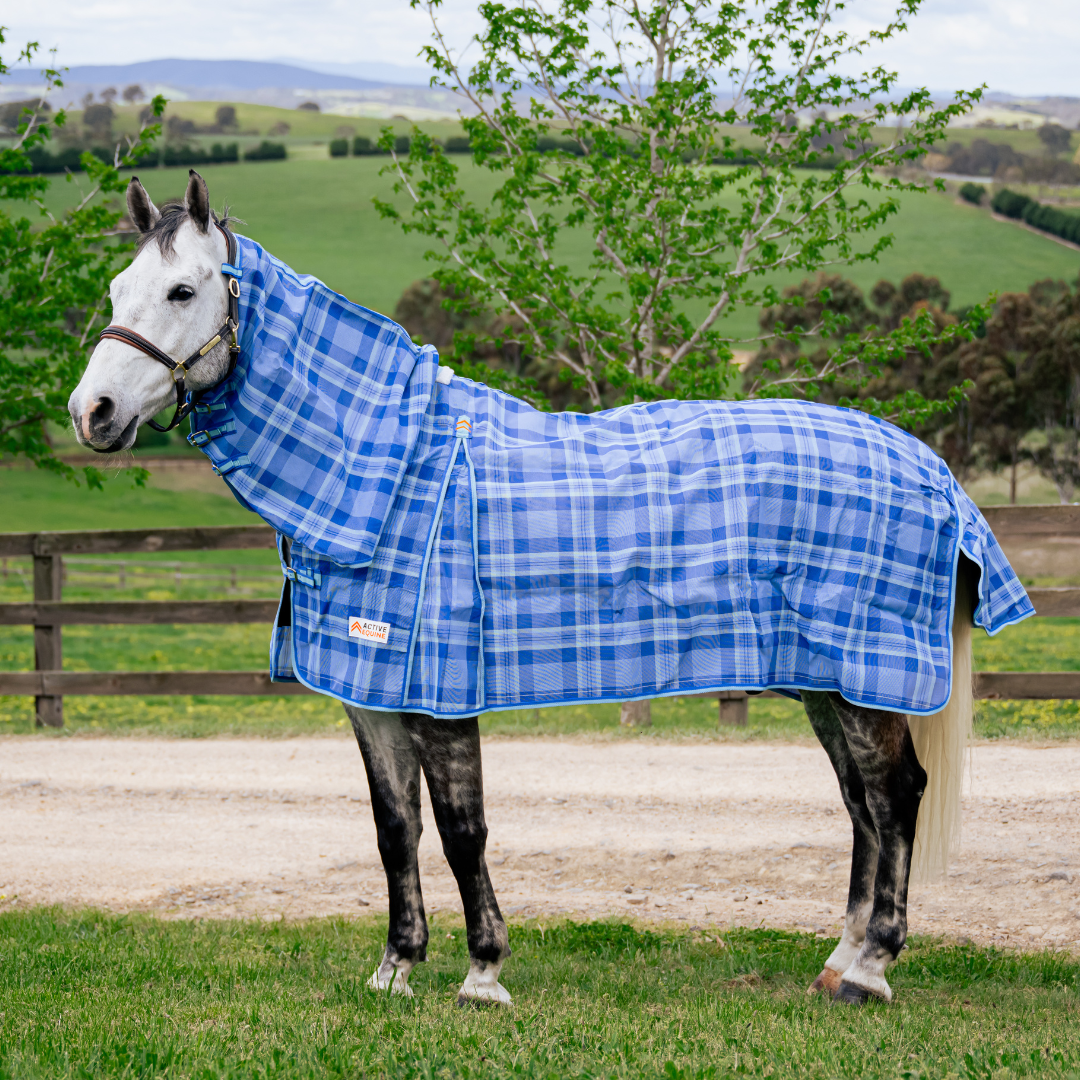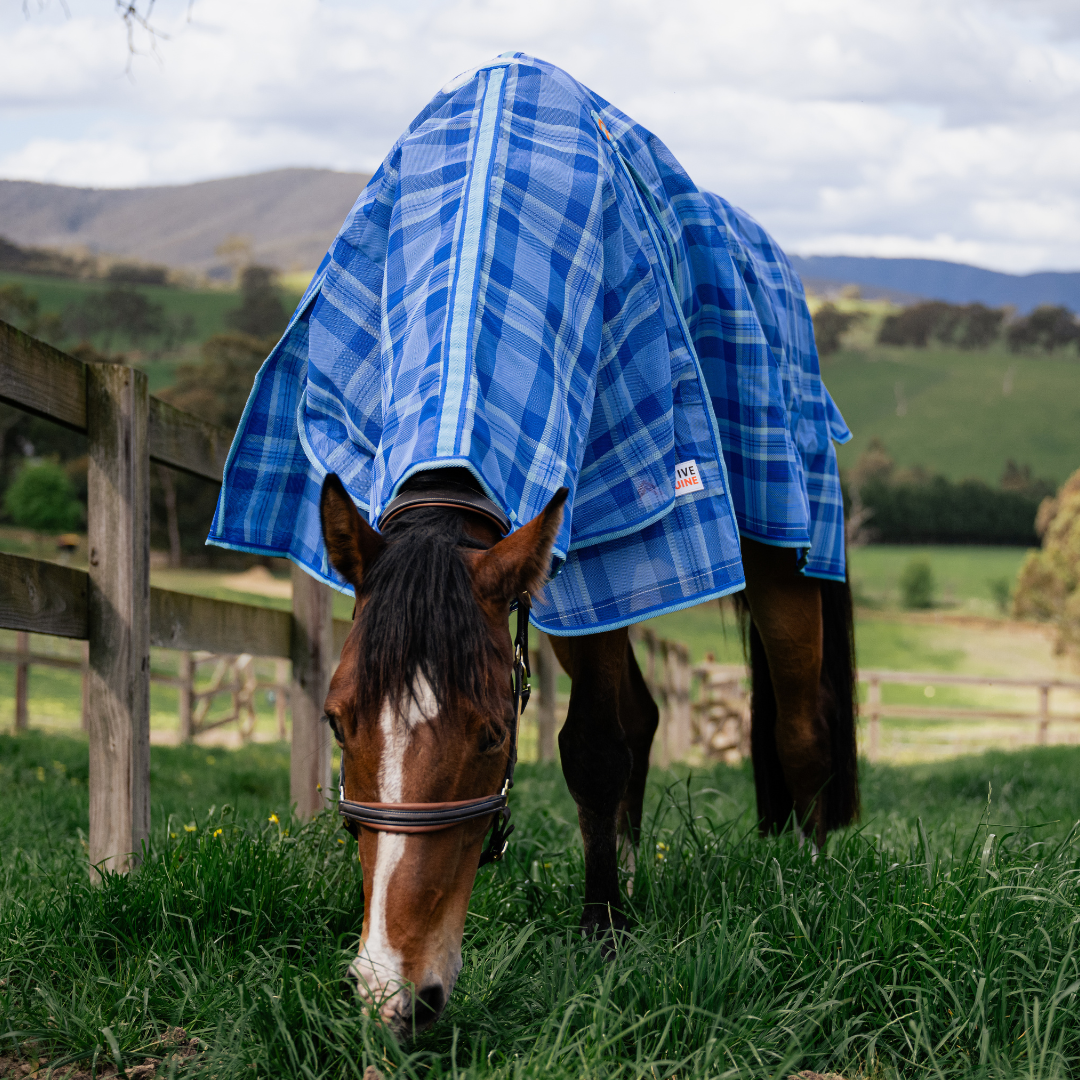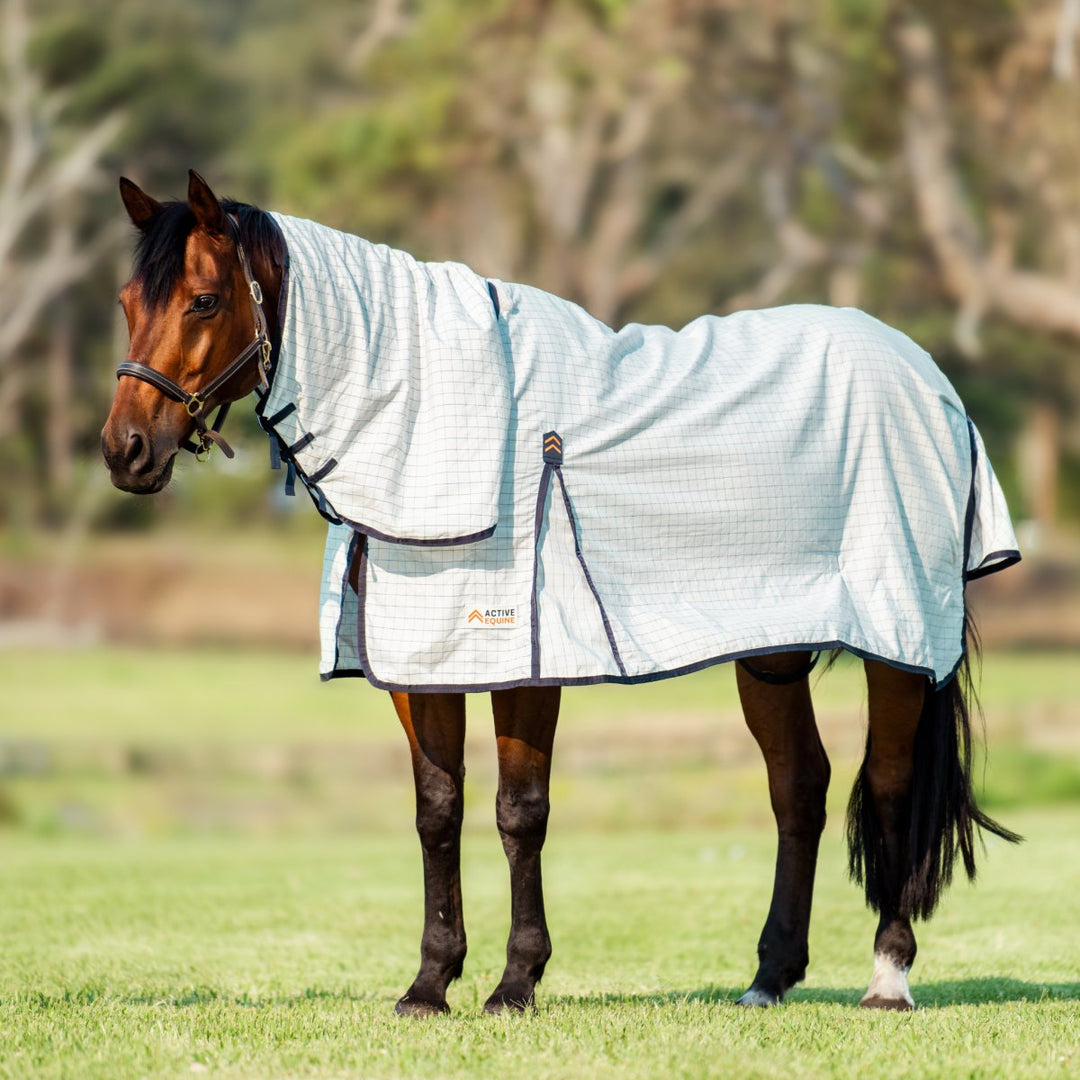Rugging Horses in Australia
Selecting The Right Rugs For The Right Conditions
Over-rugging is a common problem that owners and riders who don’t properly understand horse biology and the technical features of their horse rugs can easily make. It can lead to horse overheating which can cause dramatic weight fluctuation, metabolic disorders, bacterial skin infections and can even lead to laminitis and colic. Selecting the right rug for the right conditions is crucial to the health and wellbeing of your horse - and with some simple tips you too can avoid what is a very avoidable, costly but well-meaning mistake.
Understanding your Horse’s Biology
Horses are warm blooded mammals that use a process known as thermoregulation to maintain a core temperature of approximately 38 degrees celsius (100.4 degrees fahrenheit). Being the incredibly adaptable and resilient animals they are, they can endure extremes of cold and heat ranging from -70°C (in places like Yakutia in Russia) to upwards of 50°C (in places like Australia and the United States).
|
Quick Horse Facts - How Horses Regulate Core Body Temperature |
|
|
The evolutionary advantage this gives horses is their ability to remain active year round regardless of environmental temperature fluctuations. However, despite these extremes in temperature tolerance, horses have what is called a ‘thermoneutral zone’ - an optimal temperature range where body temperature can be regulated autonomically by opening and closing blood vessels in the skin to lose or retain heat. Whilst a range of factors and definitions influence this definition, a generally accepted zone is between an air temperature of 5°C and 25°C. Within this temperature range, horses are able to easily control their body temperature.
However, outside of these temperatures and horses will use and require other means to warm up or cool down.
|
Quick Horse Facts - Factors Influencing Heat Loss |
|
How To Decide When To Rug
The above factors influencing heat loss provide a good start in determining when your horse needs to be rugged and with what kind of rug.
You can do a quick temperature check of your horse by placing your hand behind the horse’s withers. Does it feel cold? If so, then you should consider using a rug / thicker rug. Does it feels damp? If so, this is a likely indicator that your horse is too warm and you should consider either removing the rug or using a lighter rug or sheet.
|
Quick Horse Facts - Tips On Deciding To Use Horse Rugs |
|
Choosing The Right Rug
Below is an approximate guide for when your horse is likely to need a rug. A couple of points on the table below:- A clipped horse has had most of its hair removed like in a full clip or hunter clip
- Horses with a low trace clip or similar are considered “unclipped”
A Note On The Use of Horse Rugs In Summer
Whilst the use of rugs in winter is primarily to keep horses warm, rugs can also be used in summer for a range of reasons:
For more information on this important topic, you can refer to our previous blog covering this very issue found here.
Where To Find The Right Rug For Your Horse
We have a comprehensive range of turnout rugs, stable rugs, summer and winter horse rugs from Kentucky Horsewear, Premier Equine and our own Active Equine rugs. Our range extends from 0g waterproof turnout rugs all the way to 400g soft lining stable rugs.
At Active Equine, you can be assured that we have your horse rug needs covered.
So if you are having trouble deciding which rug is right for you and your horse, our staff are at the ready to assist you in making the right product decision. All you need to do is drop us a message here and we will respond promptly.








